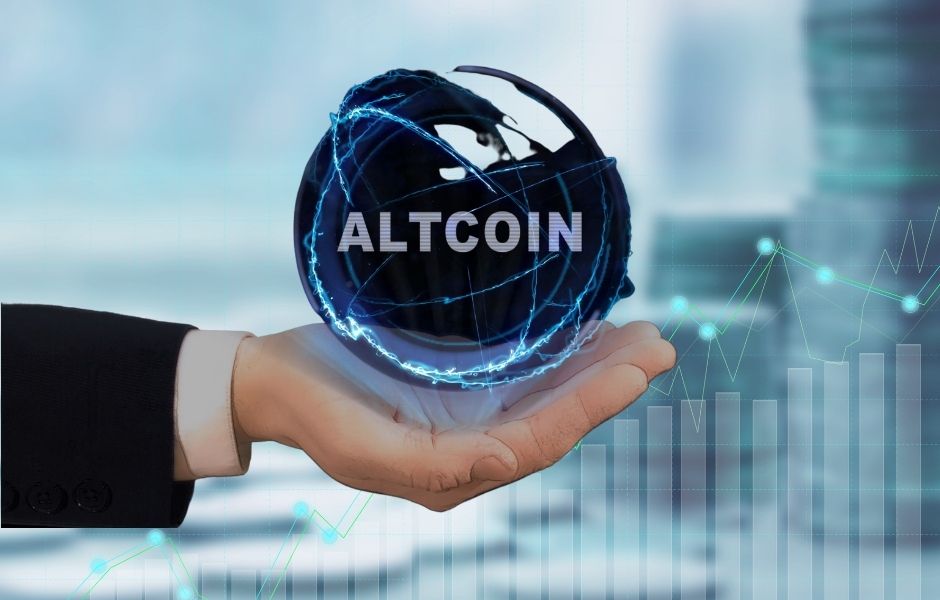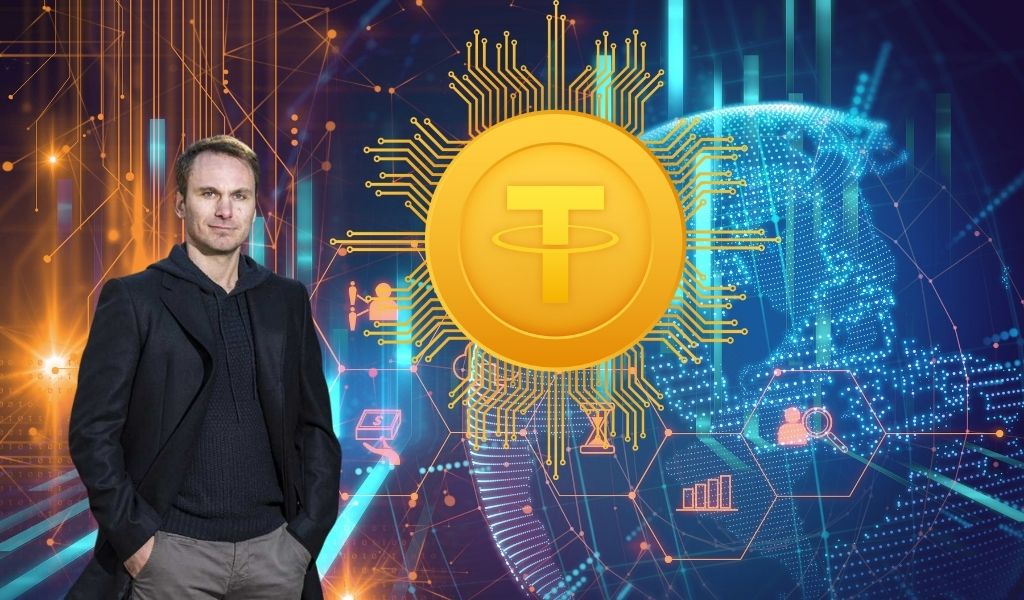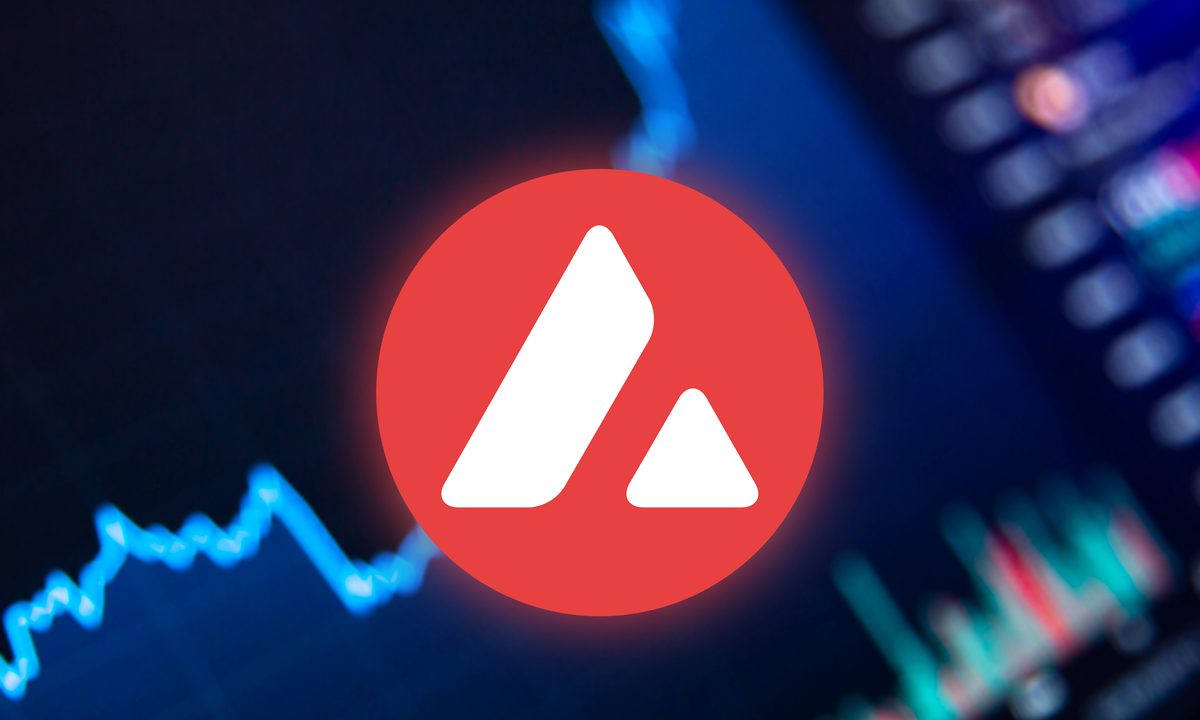The 10 Most Innovative Altcoin Technologies To Watch In 2023
Altcoin is a term used to refer to any cryptocurrency that is an alternative to Bitcoin. The word “altcoin” is derived from combining the words “alternative” and “coin.” While Bitcoin was the first decentralized cryptocurrency and remains the most well-known and widely used, altcoins have emerged as alternatives that offer various features, improvements, or innovations beyond what Bitcoin offers.
Altcoins encompass a vast range of cryptocurrencies, each with its own unique features, objectives, and underlying technologies. These alternative cryptocurrencies can differ significantly from Bitcoin in terms of their consensus mechanisms, mining algorithms, block sizes, transaction speeds, privacy features, and governance models. Some of the most popular altcoins include Ethereum (ETH), Ripple (XRP), Litecoin (LTC), Bitcoin Cash (BCH), Cardano (ADA), and many more.
Altcoins have gained attention and popularity for several reasons. Firstly, they offer alternatives to Bitcoin’s limitations. Bitcoin, for example, has a limited block size and transaction throughput, which can result in slower confirmation times and higher fees during periods of high network activity. Altcoins often aim to address these issues by implementing different consensus algorithms or scaling solutions.
Secondly, altcoins often introduce novel features or functionalities. For instance, Ethereum introduced the concept of smart contracts, which enable developers to build decentralized applications (DApps) on its blockchain. This innovation opened up possibilities for various use cases beyond simple peer-to-peer transactions.
Furthermore, altcoins can also provide avenues for experimentation and innovation in the cryptocurrency space. Developers and blockchain enthusiasts can create their own altcoins with unique features and use cases. This has led to the emergence of specialized altcoins focused on specific industries, such as privacy-focused coins like Monero (XMR) or privacy-focused platforms like Zcash (ZEC).
Altcoins can be acquired through various means, including cryptocurrency exchanges, peer-to-peer trading platforms, and initial coin offerings (ICOs). They are typically stored in digital wallets that provide secure storage for the private keys required to access and transfer the altcoins.
It is important to note that altcoins, like any investment, carry risks. The cryptocurrency market is highly volatile, and the value of altcoins can fluctuate significantly. Some altcoins have faced security vulnerabilities, regulatory challenges, or failed to gain traction despite initial hype. Therefore, it is crucial for individuals interested in investing in altcoins to conduct thorough research, understand the project’s fundamentals, and assess the associated risks before making any investment decisions.
In conclusion, altcoins are alternative cryptocurrencies to Bitcoin that offer different features, innovations, and use cases. They contribute to the overall diversity and evolution of the cryptocurrency ecosystem by addressing limitations, introducing new functionalities, and providing platforms for experimentation. While altcoins present opportunities for investment and innovation, it is essential for individuals to exercise caution, research thoroughly, and make informed decisions when engaging with these digital assets.
Also read: How To Choose The Right Altcoin To Invest In: A Comprehensive Guide
Importance of Altcoin for the economy
Altcoins play a significant role in the economy for several reasons. While Bitcoin remains the dominant cryptocurrency, altcoins contribute to the overall growth, innovation, and diversification of the cryptocurrency ecosystem. Here are some key reasons why altcoins are important for the economy:
1. Choice and Competition: Altcoins provide users with a wider range of choices when it comes to selecting cryptocurrencies that align with their specific needs and preferences. By offering alternatives to Bitcoin, altcoins foster competition and innovation. This competition can drive improvements in various aspects of cryptocurrency technology, including transaction speeds, scalability, security, privacy, and governance models.
2. Innovation and Technological Advancement: Altcoins often introduce new features, functionalities, and underlying technologies that go beyond what Bitcoin offers. For example, Ethereum introduced smart contracts, which revolutionized the blockchain industry by enabling developers to build decentralized applications (DApps) on its platform. Altcoins continue to push the boundaries of what is possible with blockchain technology, leading to advancements and breakthroughs that have the potential to impact various sectors of the economy.
3. Use Case Specificity: Altcoins cater to specific industries, use cases, or niches. For instance, there are altcoins focused on privacy, such as Monero (XMR) or Zcash (ZEC), which offer enhanced privacy features compared to Bitcoin. Other altcoins may target sectors like supply chain management, healthcare, finance, gaming, or social media. By addressing the specific needs of these industries, altcoins can facilitate more efficient and tailored solutions, potentially bringing benefits to those sectors of the economy.
4. Investment Opportunities: Altcoins provide individuals with investment opportunities beyond Bitcoin. Cryptocurrency markets have shown significant growth, attracting investors seeking potential returns. Altcoins, especially those with unique features or promising projects, can offer investment diversification and the possibility of significant gains. Additionally, altcoins provide opportunities for early-stage investments through initial coin offerings (ICOs) or token sales, allowing individuals to support promising projects and potentially benefit from their success.
5. Market Development: Altcoins contribute to the overall growth and maturation of the cryptocurrency market. As altcoins gain traction and recognition, they attract new users, investors, and businesses. This increased participation leads to greater liquidity, improved market infrastructure, and expanded adoption of cryptocurrencies in general. Altcoins help build a more robust and diverse ecosystem that can attract institutional investors, encourage regulatory developments, and pave the way for wider acceptance and integration of cryptocurrencies into the traditional financial system.
6. Financial Inclusion: Altcoins can help promote financial inclusion by providing access to financial services for individuals who are unbanked or underbanked. By leveraging blockchain technology, altcoins can facilitate peer-to-peer transactions, cross-border payments, and remittances at lower costs and with greater speed compared to traditional banking systems. This can empower individuals in underserved regions, promote economic participation, and unlock new opportunities for economic growth.
In conclusion, altcoins are important for the economy due to the choices they offer, the competition and innovation they drive, their specificity to different industries and use cases, the investment opportunities they provide, their role in market development, and their potential to promote financial inclusion. Altcoins contribute to the evolution and maturation of the cryptocurrency ecosystem, bringing benefits to users, investors, businesses, and various sectors of the economy.
Also read: Ten Altcoins Under $10 With High Return Potential
Top 10 Most Innovative Altcoin Technologies to watch
The altcoin market is constantly evolving, with new and innovative technologies emerging all the time. Here are 10 altcoin technologies that are worth watching in 2023:
- Ethereum (ETH) is the second-largest cryptocurrency by market capitalization and is known for its smart contract platform. Ethereum is constantly being upgraded, and the upcoming Ethereum 2.0 upgrade is expected to make it even more scalable and efficient.

- Binance Coin (BNB) is the native cryptocurrency of the Binance exchange. BNB is used to pay for transaction fees on the Binance exchange and can also be used to participate in Binance Launchpad, which is a platform for launching new cryptocurrencies.
- Chainlink (LINK) is a decentralized oracle network that provides real-world data to smart contracts. Chainlink is used by a variety of DeFi projects, and its LINK token is one of the most popular altcoins in the market.

- Polkadot (DOT) is a multi-chain protocol that allows different blockchains to communicate with each other. Polkadot is designed to be a scalable and interoperable platform for decentralized applications.
- Cardano (ADA) is a proof-of-stake blockchain that is designed to be more energy-efficient than proof-of-work blockchains like Bitcoin and Ethereum. Cardano is also undergoing a major upgrade called Goguen, which will introduce smart contracts and other features to the platform.

- VeChain (VET) is a blockchain platform that is focused on supply chain management. VeChain uses a unique Proof-of-Authority consensus mechanism that is designed to be more efficient and secure than traditional blockchains.
- Polygon (MATIC) is a layer-2 scaling solution for Ethereum. Polygon allows Ethereum-based dApps to scale without sacrificing security or decentralization. MATIC is the native token of the Polygon network.

- Solana (SOL) is a high-performance blockchain that is known for its scalability and speed. Solana can process up to 50,000 transactions per second, making it one of the fastest blockchains in the world.
- Avalanche (AVAX) is a scalable and secure blockchain platform that is designed to support DeFi applications. Avalanche can process up to 4,500 transactions per second and has a throughput of 3,000 transactions per second.

- Terra (LUNA) is a stablecoin platform that is designed to maintain a stable price peg to the US dollar. Terra uses a unique algorithm to mint and burn LUNA tokens in order to keep the price of TerraUSD (UST) stable.
These are just a few of the many innovative altcoin technologies that are worth watching in 2023. As the altcoin market continues to evolve, it will be interesting to see which of these technologies gain the most traction and adoption.
Benefits of Altcoin
Altcoins, or alternative cryptocurrencies, offer several benefits that contribute to the overall development and adoption of cryptocurrencies. Here are some key benefits of altcoins:
1. Diversification: Altcoins provide investors with the opportunity to diversify their cryptocurrency holdings. Bitcoin, as the first and most well-known cryptocurrency, has a dominant position in the market. However, altcoins offer different features, technologies, and use cases, allowing investors to spread their risk and potentially capitalize on the growth of specific projects or sectors within the cryptocurrency ecosystem.
2. Innovation and Technological Advancements: Altcoins often introduce innovative technologies and features that go beyond what Bitcoin offers. These innovations can lead to advancements in various areas such as scalability, privacy, smart contracts, governance models, interoperability, and consensus mechanisms. For example, altcoins like Ethereum brought the concept of smart contracts and decentralized applications (DApps) to the forefront, revolutionizing the blockchain industry and opening up new possibilities for developers and businesses.
3. Specialized Use Cases: Altcoins are designed to cater to specific industries, use cases, or niches. For instance, privacy-focused altcoins like Monero (XMR) or Zcash (ZEC) provide enhanced privacy features that offer greater anonymity compared to Bitcoin. Other altcoins focus on sectors such as supply chain management, healthcare, gaming, decentralized finance (DeFi), and social media. These specialized altcoins enable tailored solutions that address specific industry requirements, potentially increasing efficiency and reducing costs.
4. Lower Transaction Fees and Faster Transactions: Altcoins often aim to improve upon Bitcoin’s limitations, such as scalability and transaction speeds. Some altcoins utilize different consensus mechanisms or layer-2 solutions to enhance transaction throughput and reduce confirmation times. As a result, altcoins can offer lower transaction fees and faster processing times, which can be advantageous for users and businesses, particularly in scenarios that require quick and cost-effective transactions.
5. Investment Opportunities and Potential Returns: Altcoins provide investment opportunities beyond Bitcoin. Cryptocurrency markets have experienced significant growth, attracting investors seeking potential returns. Altcoins, especially those with promising projects, unique features, or strong development teams, can offer investment diversification and the possibility of significant gains. Early-stage investments through initial coin offerings (ICOs), initial exchange offerings (IEOs), or token sales allow individuals to support promising projects and potentially benefit from their success.
6. Ecosystem Development and Adoption: Altcoins contribute to the growth and maturation of the overall cryptocurrency ecosystem. They attract new users, investors, and businesses, expanding the community and increasing liquidity. This growth, in turn, leads to the development of infrastructure, exchanges, wallets, and other supporting services. As altcoins gain recognition and adoption, they contribute to the wider acceptance and integration of cryptocurrencies into traditional financial systems, potentially driving mainstream adoption.
7. Financial Inclusion and Access to Services: Altcoins can promote financial inclusion by providing access to financial services for individuals who are unbanked or underbanked. Cryptocurrencies offer an alternative means of conducting financial transactions, enabling peer-to-peer transfers, cross-border payments, and remittances at lower costs and with greater accessibility. Altcoins, with their specific features and use cases, can empower individuals in underserved regions, promote economic participation, and facilitate access to financial services that were previously inaccessible.
In conclusion, altcoins bring several benefits to the cryptocurrency ecosystem, investors, and users. These benefits include diversification, innovation, specialized use cases, improved transaction speeds and lower fees, investment opportunities, ecosystem development, and financial inclusion. Altcoins contribute to the growth, adoption, and maturation of the cryptocurrency space, fostering innovation, and expanding the possibilities of decentralized technologies.
Also read: Two altcoin projects are outperforming Bitcoin Tokens
Future of Altcoin
The future of altcoins, or alternative cryptocurrencies, is a topic of ongoing speculation and debate within the cryptocurrency community. While it is challenging to predict the precise trajectory of altcoins, several trends and factors can shed light on their potential future.
1. Market Maturation and Consolidation: As the cryptocurrency market continues to mature, it is likely that some altcoins will gain prominence while others may fade away. The market has already witnessed instances of consolidation, where stronger projects and cryptocurrencies with robust use cases and adoption have emerged as leaders. This trend may continue, with altcoins that offer unique features, solve real-world problems, and demonstrate sustainable growth attracting more attention and investment.
2. Continued Innovation and Development: Altcoins are likely to continue driving innovation and technological advancements in the cryptocurrency space. These cryptocurrencies are often at the forefront of introducing new concepts, such as improved consensus mechanisms, scalability solutions, privacy enhancements, and interoperability protocols. Altcoins that bring meaningful innovation to the table are likely to play a crucial role in shaping the future of decentralized technologies.
3. Regulatory Environment: The regulatory landscape surrounding altcoins will have a significant impact on their future. Regulatory clarity and frameworks that provide certainty for investors and businesses can foster the growth and adoption of altcoins. However, stricter regulations or regulatory uncertainty in certain jurisdictions may pose challenges for altcoins, potentially affecting their development and adoption.
4. Interoperability and Collaboration: Interoperability between different altcoins and blockchain networks is gaining attention as a means to address the issue of siloed ecosystems. Projects that facilitate interoperability and collaboration between different cryptocurrencies have the potential to bridge gaps, enhance liquidity, and unlock new use cases. Altcoins that prioritize interoperability may be better positioned for future growth and adoption.
5. Integration with Traditional Finance: As cryptocurrencies become more established, there is increasing interest in integrating them with traditional financial systems. Altcoins that can seamlessly interface with traditional banking, payment systems, and financial institutions have the potential to drive mainstream adoption. Projects focusing on regulatory compliance, security, and providing user-friendly interfaces may be well-positioned to bridge the gap between traditional finance and the crypto space.
6. Evolving Use Cases: Altcoins are likely to continue expanding their use cases beyond simple peer-to-peer transactions. They may find applications in areas such as decentralized finance (DeFi), non-fungible tokens (NFTs), supply chain management, gaming, digital identity, and more. Altcoins that cater to specific industries or offer unique solutions in these areas may thrive in the future.
7. Technological Challenges: Altcoins will need to address technological challenges to stay relevant. Scalability, energy efficiency, security, and user experience are critical areas that require constant attention and improvement. Altcoins that can effectively address these challenges may gain a competitive edge in the evolving cryptocurrency landscape.
It is important to note that the cryptocurrency market is highly volatile and subject to various external factors, including regulatory changes, technological advancements, market sentiment, and macroeconomic conditions. Therefore, while the future of altcoins holds promising potential, it is crucial for investors, users, and developers to exercise caution, conduct thorough research, and stay informed about the evolving trends and dynamics within the cryptocurrency ecosystem.
Also read: The Next Hidden Altcoin Gem is THORChain (Rune)
Stay informed with daily updates from Blockchain Magazine on Google News. Click here to follow us and mark as favorite: [Blockchain Magazine on Google News].
Get Blockchain Insights In Inbox
Stay ahead of the curve with expert analysis and market updates.
latest from tech
Disclaimer: Any post shared by a third-party agency are sponsored and Blockchain Magazine has no views on any such posts. The views and opinions expressed in this post are those of the clients and do not necessarily reflect the official policy or position of Blockchain Magazine. The information provided in this post is for informational purposes only and should not be considered as financial, investment, or professional advice. Blockchain Magazine does not endorse or promote any specific products, services, or companies mentioned in this posts. Readers are encouraged to conduct their own research and consult with a qualified professional before making any financial decisions. The featured image used is just a creative depiction of the title and it does not intend to hurt sentiments of any person or institution. If it hurts anyone sentiments, please do not hesitate to reach out to Blockchain Magazine.

 Bitcoin
Bitcoin  Ethereum
Ethereum  XRP
XRP  Tether
Tether  Solana
Solana  Dogecoin
Dogecoin  USDC
USDC  Cardano
Cardano  Lido Staked Ether
Lido Staked Ether  TRON
TRON  Chainlink
Chainlink  Avalanche
Avalanche  Wrapped stETH
Wrapped stETH  Sui
Sui  Wrapped Bitcoin
Wrapped Bitcoin  Toncoin
Toncoin  Stellar
Stellar  Hedera
Hedera  Shiba Inu
Shiba Inu  Polkadot
Polkadot  WETH
WETH  LEO Token
LEO Token  Litecoin
Litecoin  Bitcoin Cash
Bitcoin Cash  Bitget Token
Bitget Token  Hyperliquid
Hyperliquid  Uniswap
Uniswap  Official Trump
Official Trump  USDS
USDS  Wrapped eETH
Wrapped eETH  Pepe
Pepe  NEAR Protocol
NEAR Protocol  Ethena USDe
Ethena USDe  Aave
Aave  Aptos
Aptos  Internet Computer
Internet Computer  Monero
Monero  WhiteBIT Coin
WhiteBIT Coin  Ondo
Ondo  Ethereum Classic
Ethereum Classic  Cronos
Cronos  POL (ex-MATIC)
POL (ex-MATIC)  Mantle
Mantle  Render
Render  Dai
Dai  MANTRA
MANTRA  Algorand
Algorand  OKB
OKB 




